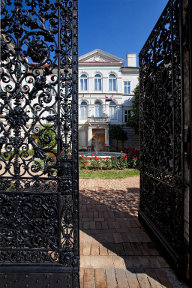MILITARY LIFE AND WARRIOR IMAGES IN THE CROATIAN BORDER TERRITOY FROM 16th CENTURY TO 1918
Project abstract
Contributions of Croatian soldiers, officers and troop commanders to the military forces of various state entities that extended over Croatian territories throughout history cannot be disputed. Thanks to the comprehensive and continuous scope of preserved archive materials on early Middle Ages, the issues can be thoroughly researched. The goal of this project is to explore demographic, socio – economic and political circumstances in the Croatian borderline territories, and to define causes and consequences between specified circumstances (developmental components) that presented the everyday life of Croatian soldiers and their identity. The research shall focus on Lika and Ogulin regiment in the Military Frontier (Vojna krajina), Zadar and Kotor as central strongholds of the Republic of Venice on East Adriatic, and the Republic of Dubrovnik. Reconstruction of everyday life and identity of military society members will include: 1. demographic data (birth rate, fertility and mortality), migrations and socio-economic context (age, gender and professional structure); 2. military and war context (military organization and training, “Hundred Years’ War” (“small war”) and art of war, image and self-awareness of Croatian soldiers); 3. geo-political context (administrative and legal organization, government transitions). In the educational sense, the project outcomes will be beneficial both locally and regionally. The aim of the research team is to process and create databases containing large quantity of military lists, birth and death registers, land registers and similar, covering the Otočac Regiment, Lika Regiment, Zadar, the Republic of Dubrovnik and Kotor.
Elaboration of the project general objective
During the early new ages European forces began to employ Croatian soldiers on the battlefields across the Europe. The cravat worn by Croatian cavalry during the Thirty Year War, stands out as the most distinct reminder of that period and globally recognized fashion item originating from Croatia. The less known fact is that the Thirty Year War labelled Croatian soldiers as brave, but cruel and merciless, and that image has stuck in the following centuries. The image of Trenk’s pandurs and Croatian border soldiers during the War of Austrian Succession, as well of Croats on Venice battlefields from Furlandia to Krf, has remained almost identical to the one from previous century. From their first appearance in the European war arena, Croatian soldiers have gathered much attention of the European public. The image of Croats in the military forces of European super powers has led to the overall image of Croats as military nation. Their presence on the battlefields across Europe was met with awe among both allies and enemies, having mental impact similar to the one generated by Goths, Tatars, Vikings etc. European public perceived Croats as brave savages that defied the standard rules of war. The “small war” or guerrilla military style that Croats developed during the Hundred Years’ War with Ottoman Empire, became their trademark on European battlefields. Serving in the light infantry or light cavalry, Croatian soldiers revolutionized the early new age warfare dominated by great manoeuvres, large – scale battles and grand sieges. Therefore, not only the dressing style, but also the warfare style distinguished Croats from others.
Habsburg and Venice rulers recognized the potential of Croatian soldiers at an early stage, and willingly incorporated them into their military forces. However, more thorough research of Croatian divisions in the Austrian and Venetian armies, like the ones on Swiss mercenaries, Irish “Wild geese” soldiers or Scottish soldiers, still has be not been implemented. Although the Croatian military history of early new age has been explored by both domestic and foreign historiographies (especially Austrian and Italian), these works primarily provide general data on the structure of Austrian and Venetian army, only outlining the Croatian segment. Besides, the military historiography up to the middle 20th century is dominated with war topics (strategies, tactics, battle etc.), while almost completely neglecting the everyday life of common soldiers. Only with beginning of historiographic discussion on “military revolution” initiated by Michael Roberts in 1955, the systematic research of correlation between political and social processes (state-building and nation-building) of this segment of military history has begun. However, this discussion never focused on military forces of the Habsburg Monarchy and the Republic of Venice, and Croatian divisions within them. The specific researches, such as the quota of Croatian born high officers in Austrian and Venetian military forces, have also never been conducted, and most of the authors only scarcely used the sources on military personnel records.
The project team will conduct research based on collection and processing of materials that, despite their vast volume, have so far been neglected by both domestic and foreign scientists and researchers (military records, registers, censuses, land registers in Croatian and foreign archives). The focus of the research will be on actual people, their activities and destinies. Therefore the research will not only deal with classic military or war history, but will follow the number and impact of this group in the social and political context of their living environment. Archive materials that will serve as basis for project tasks development are very comprehensive and require several months of filed work in archives (these are several hundreds of files directly referring to Croatian soldiers and officers who served in Habsburg and Venetian troops and were almost never mentioned in historiographic works), and the project team assigned to collect and process the materials is completely trained for the task. The importance and relevance of this topic are further reinforced by the fact that the project team has been intensively studying the activities of Croatian soldiers and officers in the Habsburg and Venetian troops for several years, and their work resulted with publications in the leading Croatian and foreign journals and attendance of several international congresses in country and abroad.

